News archive
COVID-19 vaccine with IPD nanoparticles wins full approval abroad
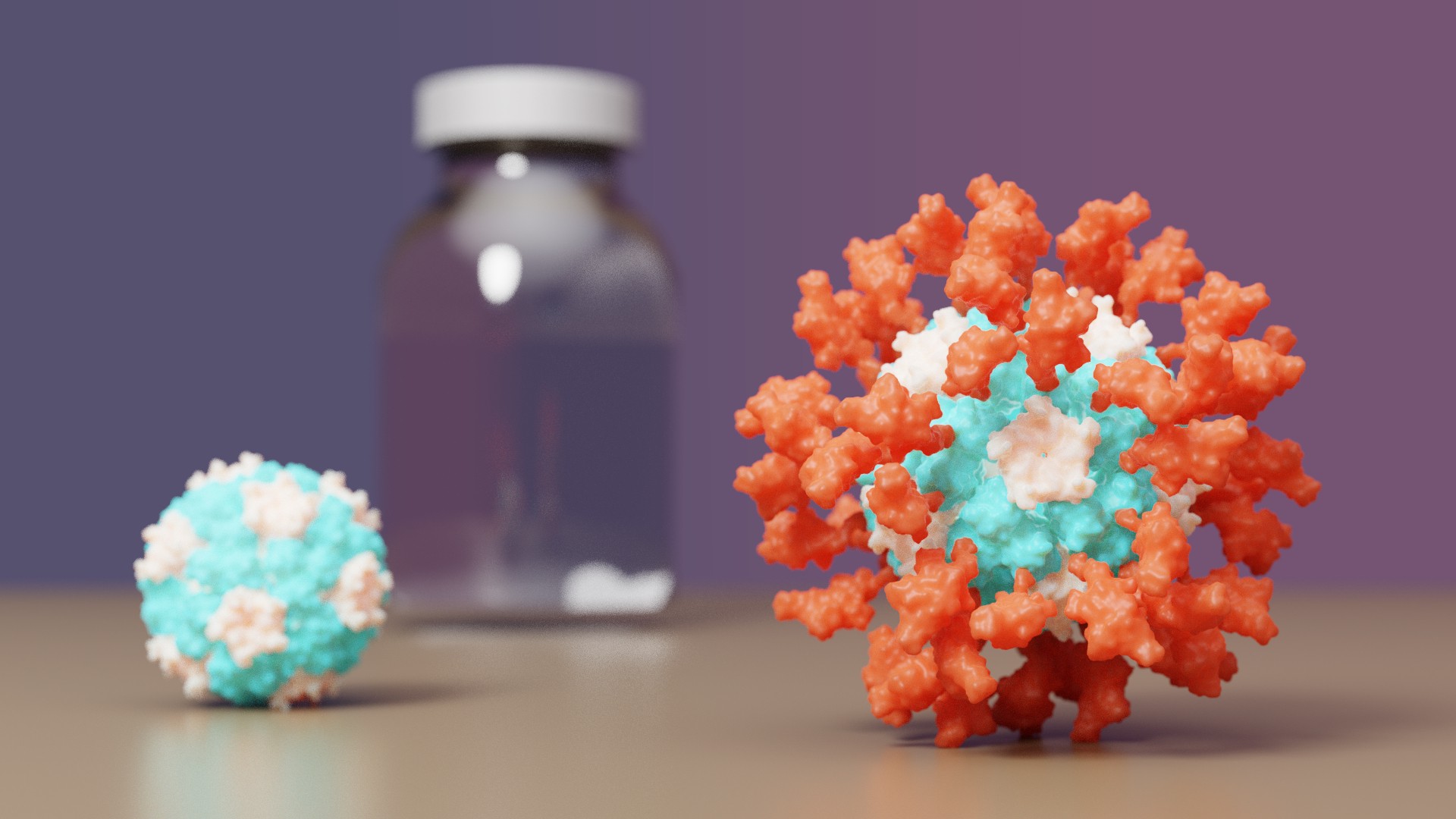
The IPD is excited to announce it's first designed protein medicine with full approval abroad.
Congrats and thank you to all Rosetta@home contributors! The computing you have provided has greatly aided in de novo protein design challenges such as vaccine development leading to breakthroughs like this.
For more information you can visit the IPD vaccine news post.
A video is also available here.
From the IPD news site:
• Clinical testing found the vaccine outperforms Oxford/AstraZeneca’s
• The protein-based vaccine, now called SKYCovione, does not require deep freezing
• University of Washington to waive royalty fees for the duration of the pandemic
• South Korea to purchase 10 million doses for domestic use
A vaccine for COVID-19 developed at the University of Washington School of Medicine has been approved by the Korean Ministry of Food and Drug Safety for use in individuals 18 years of age and older. The vaccine, now known as SKYCovione, was found to be more effective than the Oxford/AstraZeneca vaccine sold under the brand names Covishield and Vaxzevria.
SK bioscience, the company leading the SKYCovione’s clinical development abroad, is now seeking approval for its use in the United Kingdom and beyond. If approved by the World Health Organization, the vaccine will be made available through COVAX, an international effort to equitably distribute COVID-19 vaccines around the world. In addition, the South Korean government has agreed to purchase 10 million doses for domestic use.
The Seattle scientists behind the new vaccine sought to create a ‘second-generation’ COVID-19 vaccine that is safe, effective at low doses, simple to manufacture, and stable without deep freezing. These attributes could enable vaccination at a global scale by reaching people in areas where medical, transportation, and storage resources are limited.
“We know more than two billion people worldwide have not received a single dose of vaccine,” said David Veesler, associate professor of biochemistry at UW School of Medicine and co-developer of the vaccine. “If our vaccine is distributed through COVAX, it will allow it to reach people who need access.”
The University of Washington is licensing the vaccine technology royalty-free for the duration of the pandemic.
Congrats and thank you again to all R@h contributors!
6 Jul 2022, 18:27:59 UTC
· Discuss
Thank you!
We'd like to thank everyone who has contributed and continues to contribute to this project, and would like to remind everyone that there may be periods of down time while we are preparing for future large scale batches of jobs and analyzing results. We greatly appreciate your contributions which are vitally important to our ongoing research.
Thank you!
5 Nov 2020, 20:16:29 UTC
· Discuss
Coronavirus update from David Baker. Thank you all for your contributions!
Here is a short video of David Baker describing some exciting results from de novo designs targeting SARS-Cov-2.
Thank you all for your contributions to this research! Although R@h was not directly used for the work described in the publication (link provided below), R@h was used for designing relevant scaffolds. Additionally, there are currently many similar designs that bind SARS-Cov-2 and related targets that were engineered using R@h.
https://www.youtube.com/embed/ODEIN5V3yLg
More information is available from the publication, De novo design of picomolar SARS-CoV-2 mini protein inhibitors.
21 Sep 2020, 23:16:33 UTC
· Discuss
Switch to using SSL (Secure Socket Layer)
We updated our project to use SSL. The project URL has thus been changed to https://boinc.bakerlab.org/rosetta. You can reattach the project using this updated URL at your convenience. Please post any issues regarding this update in the discussion thread.
1 May 2020, 21:25:30 UTC
· Discuss
Help in the fight against COVID-19!

With the recent COVID-19 outbreak, R@h has been used to predict the structure of proteins important to the disease as well as to produce new, stable mini-proteins to be used as potential therapeutics and diagnostics, like the one displayed above which is bound to part of the SARS-CoV-2 spike protein.
To help our research, we are happy to announce a new application update, and thanks to the help from the Arm development community, including Rex St. John, Dmitry Moskalchuk, David Tischler, Lloyd Watts, and Sahaj Sarup, we are excited to also include the Linux-ARM platform. With this update we will continue to make protein binders to SARS-CoV-2 and related targets using the latest Rosetta source.
Thank you R@h volunteers for your continued support to this project. Your CPU hours are used not only to accurately model the structures of important proteins, but to design new ones as well. Let's band together and fight COVID-19!
More details will be available in the Discussion of this news post.
3 Apr 2020, 3:45:24 UTC
· Discuss
Designing shape-shifting proteins

Thank you to all R@h participants who provided much of the computing used in a recent study published in PNAS describing the design of proteins that adopt more than one well-folded structure, reminiscent of viral fusion proteins.
For more infomation, click here.
19 Mar 2020, 0:47:01 UTC
· Discuss
Rosetta's role in fighting coronavirus
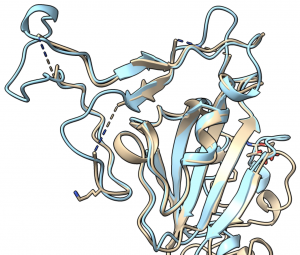
Thank you to all R@h volunteers for your contributions to help accurately model important coronavirus proteins. The collective computing power that you provide through R@h helps academic research groups world wide model important protein structures like these.
From a recent IPD news post:
"We are happy to report that the Rosetta molecular modeling suite was recently used to accurately predict the atomic-scale structure of an important coronavirus protein weeks before it could be measured in the lab. Knowledge gained from studying this viral protein is now being used to guide the design of novel vaccines and antiviral drugs."
Since the release of SARS-CoV-2 genome sequences in late January, a number of important corona virus proteins like the one described above have been modeled on R@h volunteer computers. A list of these proteins is provided by the Seattle Structural Genomics Center for Infectious Disease (SSGCID).
24 Feb 2020, 18:19:59 UTC
· Discuss
The Audacious Project

As you may have heard, the Institute for Protein Design was recently selected as part of The Audacious Project. This large-scale philanthropic collaboration, which is the successor to the TED Prize, surfaces and funds projects with the potential to change the world.
As a result, we are expanding our Seattle-based team of scientists and engineers who will work together to advance Rosetta, our software for protein design and structure prediction. The funding will also allow us to invest in the equipment, supplies and lab space needed to design and test millions of synthetic proteins.
What challenges will we be tackling? Watch my TED talk to find out.
All of this work — like everything we do — will depend on you, the participants in Rosetta@home. Whether it’s creating custom nanomaterials or safer cancer therapies, we rely on the Rosetta@home distributed computing platform. We cannot thank you enough for taking the time to be a part of this exciting research, and we hope you tell at least one friend that they too can play a role in the protein design revolution just by running Rosetta@home.
Thank you,
David Baker
Director, Institute for Protein Design
16 Jul 2019, 22:18:18 UTC
· Discuss
Coevolution at the proteome scale
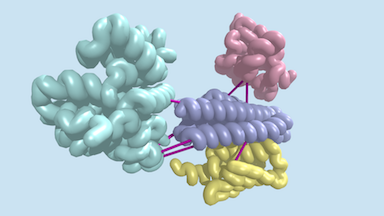
Last week, a report was published in Science describing the identification of hundreds of previously uncharacterized protein–protein interactions in E. coli and the pathogenic bacterium M. tuberculosis. These include both previously unknown protein complexes and previously uncharacterized components of known complexes. This research was led by postdoctoral fellow Qian Cong and included former Baker lab graduate student Sergey Ovchinnikov, now a John Harvard Distinguished Science Fellow at Harvard. Rosetta@home was used for much of the computing required for this work. Congratulations and thank you to all R@h volunteers.
For more information about this work click here.
15 Jul 2019, 19:23:58 UTC
· Discuss
Protein arrays on mineral surfaces

Last week, the Baker Lab in collaboration with the De Yoreo lab at PNNL published a report in Nature describing the design of synthetic protein arrays that assemble on the surface of mica, a common and exceptionally smooth crystalline mineral. This work provides a foundation for understanding how protein-crystal interactions can be systematically programmed. Although R@h was not directly used for this research, previously designed subunits were validated using R@h. Congratulations to all R@h volunteers and thank you for your continued contributions.
For more details click here.
15 Jul 2019, 19:12:28 UTC
· Discuss
Citizen scientists use Foldit to successfully design synthetic proteins


Citizen scientists can now use Foldit to successfully design synthetic proteins. The initial results of this unique collaboration are described in Nature.
Brian Koepnick, a recent PhD graduate in the Baker lab, led a team that worked on Foldit behind the scenes, introducing new features into the game that they believed would help players home in on better folded structures. Read more from the Baker Lab.
Thanks to all Rosetta@home participants who helped in this study. Many of the designs were validated using forward folding on Rosetta@home.
Read the full manuscript: https://doi.org/10.1038/s41586-019-1274-4 PDF
6 Jun 2019, 19:04:59 UTC
· Discuss
IPD's first nanoparticle vaccine
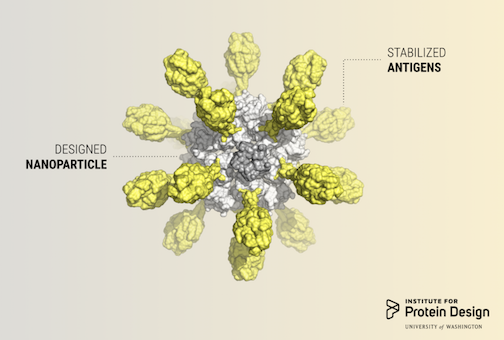
Researchers in the King lab, an affiliate of the Institute for Protein Design, published a report in Cell describing a computer-designed nanoparticle vaccine targeting respiratory syncytial virus (RSV). Although Rosetta@home was not directly used for this study, Rosetta@home volunteers provided computing for related research and development.
From IPD news:
Millions of children will visit hospitals this year, sickened by RSV. Infection is usually mild, causing only fevers, runny noses and frightened parents. But, in severe cases, barking coughs and painful wheezing can indicate serious respiratory complications, including bronchiolitis and pneumonia.
RSV is the primary cause of pneumonia in children under one and is therefore the leading cause of infant mortality worldwide after malaria. Although virtually every child on Earth will get RSV before the age of three, an estimated 99 percent of RSV deaths occur in developing countries. Despite substantial effort, there is not yet a safe and effective vaccine.
Today, an international team of scientists co-led by researchers at the IPD report in Cell a first-of-its-kind vaccine candidate for RSV. It elicits broadly neutralizing antibodies against respiratory syncytial virus in mice and monkeys, paving the way for human clinical trials.
8 Mar 2019, 18:51:56 UTC
· Discuss
Another publication in Nature describing the first de novo designed proteins with anti-cancer activity
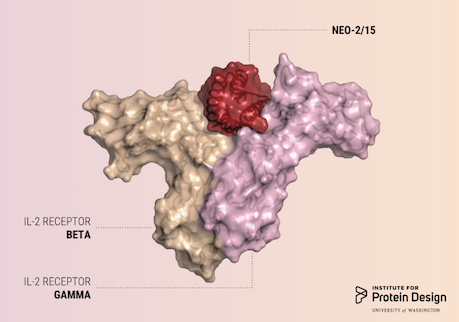
A report was published in Nature last week describing the first de novo designed proteins with anti-cancer activity.
These compact molecules were designed to stimulate the same receptors as IL-2, a powerful immunotherapeutic drug, while avoiding unwanted off-target receptor interactions. We believe this is just the first of many computer-generated cancer drugs with enhanced specificity and potency.
R@h participants provided computing for forward folding experiments used in this study which helped validate designs. We'd like to congratulate and thank all R@h volunteers who contributed to this work! Thank you!
Read the full article here: https://www.nature.com/articles/s41586-018-0830-7 (PDF)
14 Jan 2019, 22:58:59 UTC
· Discuss
Nature article on IPD work voted ‘2018 Reader’s Choice’

Readers of Nature’s News & Views selected an article about our work as their 2018 Reader’s Choice!
The article, written by Roberto Chica of University of Ottawa, does a fantastic job detailing our recent publication on de novo fluorescence-activating proteins — and the challenges of de novo protein design more generally.
4 Jan 2019, 1:06:51 UTC
· Discuss
New publication in Nature: programmable heterodimers
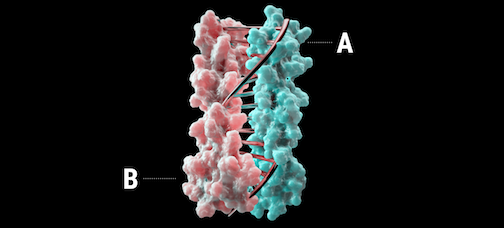
A new report was recently published in Nature describing the design of proteins that mimic DNA.
Using computational design, heterodimeric proteins that form double helices with hydrogen-bond mediated specificity were created. When a pool of these new protein zippers gets melted and then allowed to refold, only the proper pairings form. They are all-against-all orthogonal. With these new tools in hand, it may be possible to construct large protein-based machines that self-assemble in predictable ways.
Read the full article here: https://www.nature.com/articles/s41586-018-0802-y (PDF)
We'd like to thank all Rosetta@home volunteers who contributed computing resources used in this work. Thank you!
4 Jan 2019, 0:57:58 UTC
· Discuss
De novo design of self-assembling helical protein filaments
Another de novo design publication was released today describing the design of micron scale self-assembling helical filaments based on previously designed repeat proteins for which R@h participants contributed computing towards. Although R@h was not directly used for this study, R@h participants provided computing for related research. Thank you all for your continued contributions.
Read more here in Science.
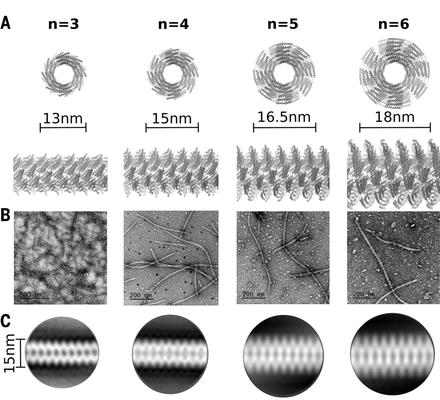
9 Nov 2018, 19:40:30 UTC
· Discuss
De novo design of jellyroll structures
Sorry for the late post. Last week the Baker lab and collaborators published the first example of proteins designed with non-local beta strand topology.
You can read more about this study here and the publication here.
Thanks to all Rosetta@home participants who contributed to this research.
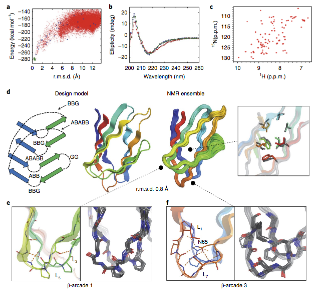
8 Nov 2018, 23:02:02 UTC
· Discuss
Discover magazine article about David Baker's progression into the field of protein design
An interesting article was released yesterday in Discover magazine about the historical progression of David Baker's research and how it has evolved into the Rosetta Commons community and the field of protein design. It includes a case example of de novo design research, and a perspective of what novel proteins may enable. Thank you all for your continued help and contributions to this research!
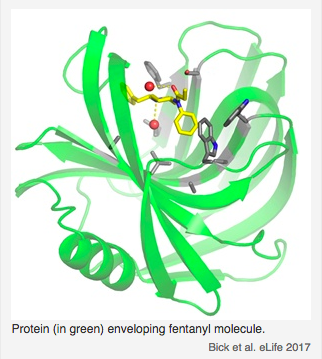
31 Oct 2018, 18:58:01 UTC
· Discuss
Rosetta 64 bit linux version 4.08 released
This update includes a fix suggested by rjs5 for the latest linux versions that use glibc 2.27+. Thank you rjs5!
Please post any issues/bugs regarding this app version in this thread.
2 Oct 2018, 17:46:01 UTC
· Discuss
Fluorescent proteins designed from scratch

Congrats to all Rosetta@home volunteers who contributed to a recent report in Nature describing the design of a completely artificial fluorescent beta-barrel protein. As described by one of the main authors, Anastassia, in this forum post:
The paper presents many “firsts” in computational protein design. It is the first de novo design of the beta-barrel fold (one of the most described folds in the past 35 years, yet mysterious until now). It is also the first de novo design of a protein tailored to bind a small-molecule, which requires very high accuracy in the placement of side chains on protein backbones assembled from scratch. Additionally, we could show that these new proteins could fold and function as expected in vivo! We hope that the advances described in the paper will further enable the de novo design of many biosensors and catalysts tailored for specific applications.
Thanks to all the Rosetta@home volunteers who contributed to the validation of our designed proteins and binding sites.
Here is the link to the IPD webpage that contains a copy of the paper. The work was also featured in the news articles below (the news in Science contains a video of one of our proteins glowing in living cells).
https://www.bakerlab.org/index.php/2018/09/12/de-novo-fluorescent-proteins
https://cen.acs.org/physical-chemistry/periodic-table/Designer-protein-tackles-binding/96/i37
http://www.sciencemag.org/news/2018/09/watch-these-new-designer-proteins-light-when-they-hit-their-target
17 Sep 2018, 23:14:21 UTC
· Discuss
Congrats to the collaborative WeFold group for their recent paper published in Nature Scientific Reports. Thank you to all R@h volunteers who contributed to this work.
Congrats to the WeFold group for their recent publication, An analysis and evaluation of the WeFold collaborative for protein structure prediction and its pipelines in CASP11 and CASP12, in Nature Scientific Reports. As CASP13 is currently in full swing, this article describes the results and analysis of the CASP11 and CASP12 WeFold coopetition (cooperation and competition) . Most of the models used by WeFold for CASP12 (and currently for CASP13) were generated by Rosetta@home volunteers. Congrats and Thank you!
3 Jul 2018, 0:13:42 UTC
· Discuss
Rosetta Android version 4.10 released
This version uses a relatively recent version of the Rosetta source. It includes updates to the cyclic peptide folding protocol among other code updates and additions since the previous build. Please post comments and issues in this thread.
27 Apr 2018, 23:29:47 UTC
· Discuss
Science opinion article about protein engineering and David Baker
Checkout a recent Bloomberg science opinion article about some of the science behind this project, protein engineering, and David Baker, titled Protein Engineering May Be the Future of Science.
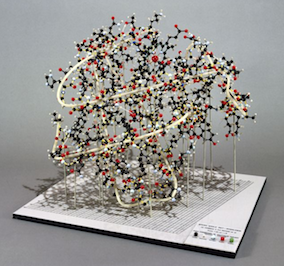
28 Mar 2018, 17:51:52 UTC
· Discuss
Rosetta 4.07 released
This version contains a bug fix for the cyclic peptide folding protocol. Please post any issues/bugs regarding this application in this thread.
27 Feb 2018, 18:33:12 UTC
· Discuss
Charity Event 2018
The Charity Team has chosen Rosetta@home for their 10th annual event to receive extended computation support for 2 weeks (January 14th 2018, 0.01h to January 27th 2018, 23.59h UTC). To participate, BOINC members are asked to leave their ‘Home Teams‘ and join the Charity Team to crunch Rosetta@home together without the normal ‘Race Conditions‘ during this time frame.
To join the Charity Team at Rosetta@home please click here:
https://boinc.bakerlab.org/rosetta/team_display.php?teamid=10787
You can find more information on the Charity Event forums:
http://forum.charity.boinc-af.org/index.php?board=12.0
and about the Charity Team: https://www.seti-germany.de/wiki/Charity_Team
Stats are also available at:
Team Stats (BoincStats): https://boincstats.com/en/stats/14/team/detail/10787/lastDays
User Stats (Sébastien): http://statseb.boinc-af.org/charity/
Comparison Stats (XSmeagolX): https://timo-schneider.de/sgstats/charity2018
Many thanks to the Charity Team for choosing Rosetta@home for their annual event!

4 Jan 2018, 0:30:08 UTC
· Discuss
The New York Times recently published an article about David Baker and Rosetta
Scientists Are Designing Artisanal Proteins for Your Body
The human body makes tens of thousands of cellular proteins, each for a particular task. Now researchers have learned to create custom versions not found in nature....
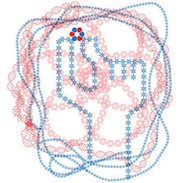
2 Jan 2018, 19:31:43 UTC
· Discuss
Recent Science and Nature publications. Congrats!
Two research publications were released last week in Science and Nature. The Science publication describes work which relied on computations from Rosetta@home most of which were from Android devices. The Nature publication did not directly use Rosetta@home due to the large size of the designs but used Rosetta. Congrats and thank you for your contributions!
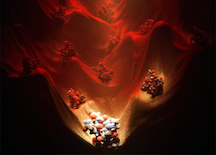
Comprehensive computational design of ordered peptide macrocycles. As described in the abstract, macrocyclic peptides composed of l- and d-amino acids were designed by near-exhaustive backbone sampling followed by sequence design and energy landscape calculations. More than 200 designs were predicted to fold into single stable structures, many times more than the number of currently available unbound peptide macrocycle structures. Nuclear magnetic resonance structures of 9 of 12 designed 7- to 10-residue macrocycles, and three 11- to 14-residue bicyclic designs, are close to the computational models. The results provide a nearly complete coverage of the rich space of structures possible for short peptide macrocycles and vastly increase the available starting scaffolds for both rational drug design and library selection methods.
Read more from UW Medicine News.
Evolution of a designed protein assembly encapsulating its own RNA genome. As described in the abstract, synthetic nucleocapsids composed of icosahedral protein assemblies with positively charged inner surfaces were computationally designed. The ability of these nucleocapsids to evolve virus-like properties by generating diversified populations and selecting for improved genome packaging and fitness against nuclease challenge was also explored. The results show that there are simple evolutionary paths through which protein assemblies can acquire virus-like genome packaging and protection. Considerable effort has been directed at ‘top-down’ modification of viruses to be safe and effective for drug delivery and vaccine applications; the ability to design synthetic nanomaterials computationally and to optimize them through evolution now enables a complementary ‘bottom-up’ approach with considerable advantages in programmability and control.
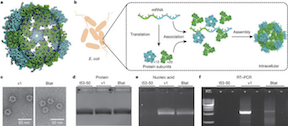
18 Dec 2017, 19:20:52 UTC
· Discuss
Research of the Year!
Congrats and thank you! Chemical and Engineering News has highlighted our work for research of the year. Your contributions provided much of the computing to make this possible. Thank you!
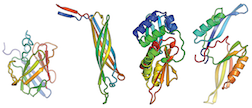
Read more.
14 Dec 2017, 19:24:28 UTC
· Discuss
Our rosetta and android apps have been updated to version 4.06
This app version was built using the latest Rosetta source. Please report issues in this thread.
21 Nov 2017, 20:14:17 UTC
· Discuss
Rosetta@home has contributed to a number of recent publications. Congratulations and thank you!
In Nature: building 20,000 new drug candidates. New de novo designed "mini-protein" binders were custom built to target either a deadly virus or a potent toxin and were shown to afford protection to mice. Read more.

Sensors for the potent opioid fentanyl. Using a fully-automated Rosetta design pipeline, high-affinity fentanyl sensors capable of detecting environmental fentanyl were produced. Read more.
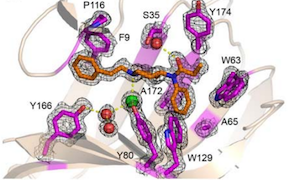
In Science: data-driven protein design. This work achieves the long-standing goal of a tight feedback cycle between computation and experiment and has the potential to transform computational protein design into a data-driven science. Rather than observing thousands of complex natural proteins to try to deduce their folding rules, over 15,000 new, simpler proteins were built – all designed using Rosetta. Through multiple design rounds, features that led to successful folding were learned and incorporated into the design pipeline. Read more.

5 Oct 2017, 18:42:22 UTC
· Discuss
The rosetta application has been updated to 4.04 for Windows platforms
The "rosetta" application has been updated to 4.04 for Windows platforms to address the Windows BOINC client 7.8.2 issues. This is a relatively recent version of the Rosetta software source and will eventually replace the "minirosetta" application. Please report issues/bugs in this thread.
5 Oct 2017, 17:43:12 UTC
· Discuss
The minirosetta application has been updated to 3.78. This version includes a patch to prevent fatal errors when using the Windows BOINC client version 7.8.2. There are known issues with this client version for Windows platforms and the BOINC developers are working on a fix. To report bugs, go to this thread.
3 Oct 2017, 18:19:20 UTC
· Discuss
Welcome to our updated website!
After many years of service, we are happy to announce that our old website and servers have been retired and we have finally released our new website powered by the latest BOINC software and new hardware. Everything is new and modernized.
If you have any comments or would like to report any issues regarding the new website please post your feedback in this thread.
23 Jun 2017, 4:17:54 UTC
· Discuss
Outage notice
I'm pretty sure this message never appeared at the datetime stated. First I knew was 36 hours later and I'm pretty sure I logged on 24 hours after this notice.
Still, can't be long now. I note the upload server isn't back quite yet.
20 Jun 2017, 0:00:00 UTC
· Discuss
Journal post from David Baker
Very useful post. This is my first time i visit here. I found so many interesting stuff in your blog especially its discussion. Really its great article. Keep it up.
เกมสล็อตออนไลน์
เกมสล็อตมือถือ
ทางเข้า ufabet
20 Jan 2017, 0:00:00 UTC
· Discuss
Journal post from David Baker
Very useful post. This is my first time i visit here. I found so many interesting stuff in your blog especially its discussion. Really its great article. Keep it up.
เกมสล็อตออนไลน์
เกมสล็อต
เกมสล็อต
1 Aug 2016, 0:00:00 UTC
· Discuss
Journal post from David Baker
The blogs are very interesting and knowledgeable.
โจ๊กเกอร์
เกมสล็อตออนไลน์
คาสิโน ufabet
Ufabet app
17 Jun 2016, 0:00:00 UTC
· Discuss
Journal post from David Baker
hi.
i realy injoy
i have some idea about it . pls call me
https://ghalino.com/
12 Feb 2016, 0:00:00 UTC
· Discuss
The minirosetta application has been updated to 3.65
Thanks you sharing
12 Oct 2015, 0:00:00 UTC
· Discuss
Rosetta Graphics released for Windows
cool,
27 Nov 2005, 0:00:00 UTC
· Discuss
News is available as an RSS feed

©2024 University of Washington
https://www.bakerlab.org